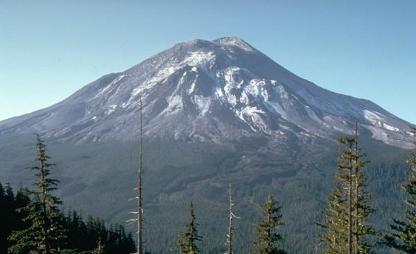Long Term Effects
One of the most stark effects of the eruption was the damage to the cone of the mountain. The initial landslide and subsequent eruption had a dramatic effect, blowing away much of the summit of the mountain and decreasing the height of the volcano by 390 m to 2560 m above sea level. A massive crater was also blown in the northern face of the mountain where the landslide occurred, 3.5 km wide and half a kilometre deep.
Agriculture across the US was also adversely affected following the eruption. As much as 12% of the total crops grown were destroyed by the ash nationwide. Farmland was most significantly effected on a local scale; almost all of the crops and livestock situated in the valleys at the foot of the mountain were destroyed by the flood-waters, pyroclastic flows and lahars which seeped down the mountain. Higher than usual damage in those valleys is thought to be due to high concentrations of farmland, drawn by the fertile volcanic soil.
Much of surrounding natural vegetation was destroyed as well; swathes of forest were either burnt by the pyroclastic flows or washed away when Spirit Lake flooded. 250 square km of forest were wiped away, mainly to the north of the volcano. Rivers were filled by sediment, including 250 km of prime salmon and trout fishing streams. As the rivers and streams were filled, much of the local drainage systems disappeared, causing a much greater risk of flooding in the area.
There was a large human impact as well; buildings were buried under the rubble and 200 homes were destroyed, making many people homeless. Communications and transport infrastructure were impacted, as road and railway bridges were washed away. It was almost a decade until all of the sediment was removed from the rivers and streams, allowing water to flow again.

A destroyed bridge over the Muddy River, taken four months after the eruption - USGS


